The photographer has arrived to photograph the characters for your story. They are setting up the lights and the backdrop as your characters get ready to have their photograph taken.
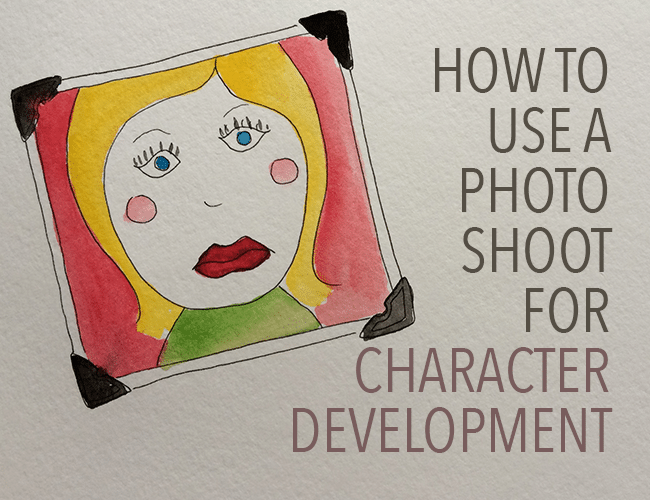
In my last post, I shared how you can interview your characters to find out how they think. Today, we'll learn how visualizing a photo shoot will help you improve your character development.
Use a Photo Shoot for Character Development
When we imagine what a character looks like, we see only the basic, surface details, like height and hair color. But when we describe a character in a photograph, a person is more than their hair color, height, and gender. We can learn a lot about them from the way they pose for the photograph.
To find out who your character is through a photo shoot, you can ask some of these questions:
- Are they comfortable in front of the camera? Are they fidgety or camera shy?
- What does your character look like? Long hair? Short hair? How tall are they? Male or female? What's the color of their hair, of their skin?
- What is their posture? Do they stand up straight? Do they smile boldly at the camera, or do they try to hide their face?
- What are they wearing for their photograph? Did they have trouble making up their mind? Did they wear a suit or casual clothes? Make-up, or no make-up? Did they shave their face? Clean shaven, or a rugged growth of a few days? Are they wearing a hat? Do they have glasses on?
- What kind of photograph is it? A formal portrait in a studio with artificial lighting, studio lights in an office, a photograph outside with natural lighting, or a selfie?
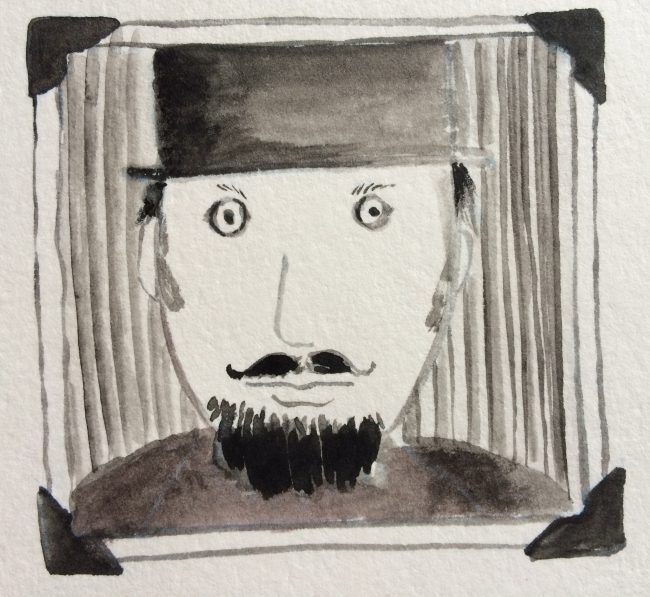
Find Out Who They Are With a Photograph
Once the photo shoot has finished and you see the pictures that were taken, there is still more to learn. You can tell how a person thinks about themselves by looking at a photograph of them.
If you're not sure how to discover all this useful character development information, ask some of these questions.
- Is the photograph a head-shot, or a full-length portrait?
- Is the photograph in black and white or in color? A polaroid? Vintage or printed at your local pharmacy last week?
- What year was the photograph taken? Was it taken in the early 1800s when the person had to sit still for long exposures?
- Is the person alive or dead in the photograph? Is it a murder scene photograph taken after the body is discovered?
- Is the photograph for a magazine article, or is the photograph a snapshot taken while they were waterskiing? Was the photograph taken by a private detective while your character was meeting a drug dealer?
- Was the photograph taken with a polaroid camera, a 4×5, a 35 ml camera, or a cell phone?
- Is the photograph in focus? Did the person know the photograph was taken? Was it taken with a long-distance lens by a detective? paparazzi? Or was it taken in a studio with a set-up appointment?
- Do they look right at the camera with confidence, or do they avert their gaze?
- Are they smiling, or scowling?
- What did they wear for the photograph? A suit or blue jeans and a t-shirt? What shoes are they wearing? Sneakers? Doc Martens? Hight heels? Or are they barefoot?
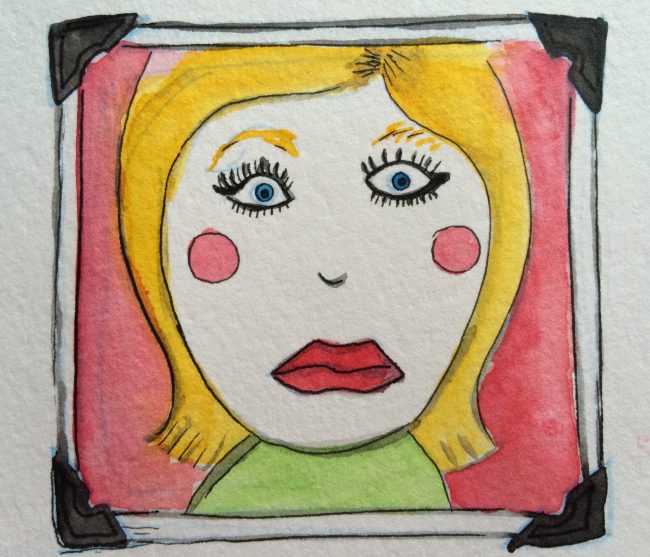
Get to Know Your Character
Perhaps you will find many of these questions helpful for character development. Or maybe you will have to ask different questions to get to know your character through a photograph.
Either way, get creative as you investigate who your characters are. Don't look only at surface-level details, but pay attention to their body language, their facial expressions, the ways they act, and the scenes around them to help you understand their personality and motivations.
How would you take your character's photograph? Let me know in the comments section.
PRACTICE
Write for fifteen minutes about what you would see in a photograph of one of your characters. A small snapshot of their life. Was the photograph taken in a studio? On location? Was it taken by a professional photographer or a friend, or did they take their own photograph? A selfie?
What does your character look like?
It will be interesting to see how characters from different writers will get their photograph taken.
Please share what you have written in the comments and read and comment on someone else's story. We can share our writing and support each other.
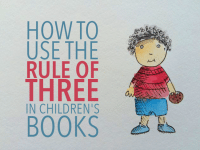
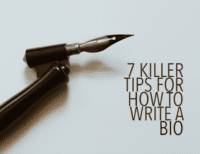
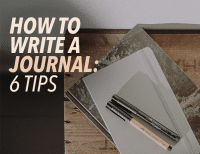
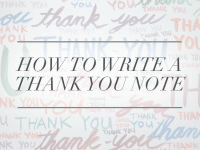



Great post! My character is always ready to entertain, makes faces to cover embarrassment. Medium height/weight, unkempt hair, casual clothes. A little self conscious about teeth and looks. Strictly spontaneous photos would be acceptable. Does not generally like looking at a photo of himself, but always willing to make a joke about awkward moments. Photos tend to be too much self scrutiny, too uncomfortable. Too much reality! Thanks for an interesting approach to character development.
Hello Ruth,
Your character felt so real by your description of what he thinks about a photograph of himself. Thank you for taking the time to introduce him. I am so curious to know what name you gave him. He doesn’t sound like an Edward or a Richard, maybe Bruce or Greg?
xo
Pamela
I really like the questions about what the photo shoot would be like. These questions will help me find that perfect image that helps me write the character. I am a visual person and have always found it helpful to do an image search with google. I find an image that has the characteristics I am looking for and embed it in my character interviews. If my idea about the character changes I find a new image that better fits my current idea of my character.
This is absolutely a great way to know our characters. I think my “Feisty Feline” character is camera ready…
I loved this prompt! Here’s my practice. Reviews are always appreciated!
For her twentieth birthday, her parents had commissioned a holo-portrait of her. It wasn’t typical for a member of a respected family to get their portrait done so young. Though it was never said explicitly, she suspected the gift was an attempt to mollify her, to spoil her and thereby convince her to keep her partying in check. It didn’t work. She was expelled from university a few months later.
Her portrait was installed in their hall of ancestry, surrounded by those of her family, going all the way back to the first galactic generation of the Cen family. Hers was tucked in the far corner, at a safe distance from her parents. Her portrait hovered above the combination pedestal and projector. For her pose, she’d chosen to sit in her favorite armchair in their library, legs crossed elegantly, posture studiedly nonchalant. For once, she wasn’t high. She’d worn her favorite suit, the grey silk three-piece with the purple tie. Her hair had still been long then, and every so often her portrait would toss it back and wink rogueishly. During the sitting, she had directed the winks at the holographer, an uptight but not unattractive woman, who would blush and stammer and fiddle with the equipment in response.
If a button on the pedestal was pressed, a short interview played. The portrait came to life with a tinkling laugh, turning her head this way and that. “How shall I sit? Which do you think is my good side?” The was a pause as the holographer mumbled a response. “Come, chérie, don’t be embarrassed! I know it’s hard to pick.” The holographer spoke up then, “Mademoiselle Cen, if we could get started in earnest, si vous plait?” “Of course, chérie, of course.” “What do you consider to be your greatest achievement?” The portrait reached out and her hand came back holding a book, Greek Myths and Legends. “As of yesterday, I’ve read this book five hundred times!” “What’s your favorite story?” “The legend of Perseus.” “Why that one?” The portrait thought a moment before replying. “I like that he never meant to be a hero. He was just a man who found himself living an extraordinary life. I don’t think he ever realized he was special. And now he’ll be remembered, forever.”
Kaya reached out and pressed the button, halting the portrait there. She put her hands in her pockets and stepped back, studying this flickering blue echo of a girl who took too many drugs, and kissed too many women she didn’t love, and read too many stories of heroism that she couldn’t comprehend. She stood there, in the ruins of her family home, and in the restful silence that followed the end of war she looked at who she used to be. She smiled. “Ah, you beautiful brat.” And she walked away.
This was quite well done. I’m not sure I would normally advise introducing a character as they were, but this bit of practice is going to make me rethink that idea.
On a broader note, the way you’ve dropped us into the world without explaining any of it was exceptional. There are a million questions I have but I fully expect them to be covered in the next pages.
I’m glad you liked it! This character is from a screenplay, but I decided to do the exercise in prose to allow for more vivid description. I think however I may translate this into a scene for the real project. These exercises are always great idea generators. I came up with the idea of holo-portraits on the spot for this!
I know what you mean. Some of these practices/writing prompts have really given me some chance to fill in the world around things even when I’m not working with my main story.
I enjoyed it too! You drew me in with the contrast between her family’s expectations and her own choices in life. Her winking at the holographer and choice of favourite story gives hints about her character, and the ending makes me want to know more! This could work well as the opening scene of a novel.
I’m glad you liked it! Kaya is a character in a TV screenplay I’m currently working on, titled Perseus after the name of Kaya’s spaceship. My idea was not to reveal why the name is significant until the very end of the story.
Now you’ve got me curious. In Singapore, ‘kaya’ is the name of a coconut/pandan jam that we spread on toast for breakfast. Haha!
Really? I didn’t know that, but I like to think the backstory of how she got the name is pretty good. “Kaya Lim” is an alias that eventually she takes as her real name because she chose it for herself. Her real last name is in the practice.
He knew he was being watched.
It wasn’t the passersby. He was used to the gazes that lingered a fraction of a second too long. After all, he was in a neighbourhood that would make his mother clutch her handbag to herself – a neighbourhood where he did not belong.
Fortunately he was skilled in deflecting unwanted attention. That was why he had chosen this spot in which to tarry. He was sitting on a flight of steps leading to the front door of an apartment he had established was vacant. Unless they were directly in front of him, the chest-high walls on either side of the stairway would make him invisible to passersby on the street.
Yet, somehow, he was still being watched.
He tightened his grip on his sweating frappuccino. The crowded Starbucks had convinced him it would be a good idea to get it to go and find a quiet spot to drink it. He’d congratulated himself on finding this space, where he’d been unhassled for the past quarter-hour. Now he was not so sure. How long had the watcher been there?
He stood up. There was a gasp audible even from where he sat.
Two things were certain. One, he was definitely being watched. And two, he knew where – and who – his watcher was likely to be.
As he approached the tall recycling bin across the street, the shadow of the figures crouched behind it became clear. He had been wrong on one count – his watcher was not singular, but plural.
“May I be of assistance?”
A stifled scream. “Is he talking to us?”
“Of course he’s talking to us, idiot!”
“But he can’t, he doesn’t know we’re here – ”
“I told you to keep your big mouth shut just now – ”
Philip smiled. “I can hear every word you’re saying, so why don’t you come out and say hello?”
Sheepishly, two boys no older than his youngest brother emerged from behind the bin. One looked defiant. The other was clearly terrified, yet somehow managed to speak.
“Are you – are you really – ”
He extended his hand. “Prince Philip the Third of Zandar. Pleased to meet you –”
“I told you it’s him!” The terrified one elbowed the other, triumphant now. “I thought you’d have bodyguards, I didn’t think it was really you!”
Clearly his efforts to disguise himself had failed. “I must commend your powers of observation, young man. I did not expect a youngster to be familiar with Zandarian royalty.”
“Can we take a photo with you? Our parents, they’ll never believe me, I have to prove I met you!”
For years after, when he posed for portraits with visiting politicians and dignitaries, he would think back to his favourite photo of himself: a wefie with two boys on a random street in Amber Beach.
Very well done! At first I had so many questions (including, “How is this a photo shoot?), and by the end you had answered them all, and not in the way I was expecting! This was a real treat. Thank you.
Thank you! For a change I decided to write about a supporting character instead of my protagonist, and I must say he surprised me too. Haha could I ask what questions you had as you read?
I wondered if “he” was a spy, or a private detective or something. I wondered who was watching him and why. I wondered what he was doing there, even after you told the reader he was simply in a quiet spot to drink his frappuccino.
You did a great job of creating not just a scene, but a story. Prince Philip may be a supporting character in your WIP, but he could easily be the protagonist in another story. I think you could even write a story from the perspective of the two teenagers.
Thanks. I think the daily 15 minute writing prompt has taught me to pack as much conflict/characterization into as few words as possible. Writing 15 minutes every day is hard, and so often I just want to get it over with so I can go on to whatever else I have to do for the day. Glad to hear you think this could work as a story too! Shows I’m getting better.
Nice! Well done!
Thanks!
Fantastic work. I wish I could describe the character like the way you posted here.
Thanks! Really appreciate the encouragement. I was surprised at how well this turned out. It’s my first time writing this particular supporting character from my WIP, and I’m really glad his voice came through in this scene.
I saw her in the park. Not actually in the park, but passing by as I sat on the park bench. I’d been photographing subjects all day as they presented themselves, and this girl certainly made an interesting subject.
I got up from the bench and walked toward her, my camera in hand. She couldn’t have been more than sixteen.
She wore black jeans and sneakers that were so beaten I couldn’t be sure what color they had been when they were new. She was Asian, or of Asian descent, and her raven-black hair was unkempt. She wore a backpack; black with what had once been pink shoulder straps. Her T-shirt was charcoal gray, and as I got closer I could see it bore an image of a whippet. Her whole appearance was dirty, almost ragged, and I wondered what her story was. As I got a closer look at her face, I could see she was blind. She carried no cane, and seemed to be navigating the sidewalk very well, albeit slowly. She walked on, her head down.
I got in front of her and took a photo. She stopped, raising her head. We stood there for a moment before she spoke.
“Please, sir, let me pass,” she said. “I don’t like having my picture taken, especially without permission.”
I was stunned. She had been aware of my approach. She had heard the subtle click of my camera and correctly deduced I was taking her picture.
“How…how did you know I was male?” I stammered.
“The cologne you’re wearing. Intensity, isn’t it?”
I was still standing there, shocked, but she pushed past me and went on her way.
This is good! I like that your character (Akiko, right?) speaks up for herself. Is your narrator another character from the story, or did you make him up for this practice?
Yes, this is Akiko, and I’m flattered to know you’ve been following her story. The narrator in this piece is simply me. I just asked myself what it would be like to meet Akiko. I mean, clearly I know her backstory, but if she were an actual person I would know nothing about her when we met. What would that be like? What sort of impression would she make on me?
So, no, this character is not likely to appear in any “canon” Akiko stories. Most of what I have written has been from her POB (Point of Blindness — see what I did there?), but I have been thinking about what the story looks like to other characters in the story. This is particularly true of my antagonist, a mysterious man who, when Akiko asks who he is, simply answers, “Call me Moriarty.” (I’m not sure if Akiko even understands that reference.) What is his story? Why is he so doggedly determined to keep Akiko from discovering her past? I know something of this, of course, but in HIS version of the story, he is the hero. What does that look and feel like?
So what other points of view will appear in the final story? I can hardly wait to find out myself!
Doe in the headlights photograph on the front page of the Gazette. Suzie Wydell couldn’t stop crying. Her boyfriend had wrecked his Harley while blasting, “Photograph” by Def Leppard and he was killed. She was thrown into the bushes but wasn’t hurt. The news camera took a photo of her while she was explaining what happened. It was the worst photo of her life and the worst day. Her hair was huge and her make-up was smudged.
The eighties were a blur after that. Drugs, sex, more photographs. She finally kicked drugs and had a baby. Cutest baby in San Francisco. She named him, Colt. And he was destined for stardom. His pictures were in every room of her large house. He won best looking in elementary, junior high, and high school.
One of the good idea to pay more focus on character development!
Rocero would never be a king, even though he believed that he should be, but the picture he had painted of himself said differently. In the still world of this picture, with its beautiful vibrant colors, not only was Rocero nobility, where the nobility of his people no longer existed, he was also a king where no king ruled.
He studied the picture of himself. The room looked as if it was lined in gold and silver. Over his shoulders was a red cape of dyed fox fur, and on his head a crown of gold leaf. The warhammer that was, in real life in his hands, and in the world of the picture, helped him win his kingdom, was leaned against his throne. He sat not in a threatening posture, but one that implied he was a philosopher king, leaned forward his head resting on his fist, his other hand ready to grab his hammer and defend himself or his kingdom.
He appreciated the artist’s embellishments. He looked more as he did in his youth not that of a man well into his fourties. His belly was smaller, there was less grey hairs and less wrinkles in his face. But the scars, the scars were still there. The scar across his face where that his father gave him, including the scars from many battles and scuffles.
“Do you like it,” said the voice of the artist snapping him from his reverie.
He grunted a reply. Neither a yes or a no. More of a beastial grunt that reminded him that he wasn’t nobility nor a king.
He took a pouch of coins and tossed it too the artist. “You’ve showed me a world that I plan on making true. My the gods help the men who stand in my way.”
And with that Rocero, the warrior from the southern swamplands, grabbed the picture and walked out of the artist’s shop, intent on making his dream a reality.
(Typed on my phone, excuse the format)